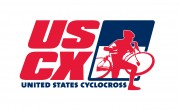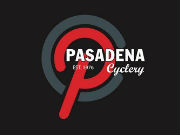
USAC in SoCalCross
How USAC Points Really Work on the West Coast
Garrett Follmuth, SoCalCross
USAC (USA Cycling) sanctioned racing in Southern California is a source of heated debate. Currently there is a divide between the recreational participants of cyclocross and the points-driven racers. The source of that argument is the misguided understanding of what the racers would gain from having more USAC events. There are two criteria that need to be considered:
Upgrade Points – In order to qualify for nationals you must hold a USAC license of Cat 3 or Higher. (Masters over 55+ are exempt)
- Upgrade Points – In order to qualify for nationals you must hold a USAC license of Cat 3 or Higher. (Masters over 55+ are exempt)
- Ranking Points – Once you get to Nationals, your ranking points determine your place in the starting grid.
In this article I will explain how these point system work, and how you can use them to earn your rightful spot in the grid.
Before we do that, let me just state the bottom line for racers: USAC sanctioned races aren’t the answer to our problems.
I have spent many hours over the last year, in my own ignorance, fighting with Dorothy Wong (affectionately known to the Southern California biking community as Dot) about why SoCalCross isn’t USAC sanctioned. It seems so straightforward to me – the way to get to Nationals and place well is to race in USAC races. Easy, right?
Wrong. A quick Google search about the USAC and UCI governing body paints a much different picture from the general perception of the cycling community. In their attempt to monopolize racing in the United States, the USAC effectively punishes any racer who competes in non-USAC sanctioned races. (It wasn’t long ago that UCI disqualified any rider from the world championships if they were found to have participated in a non-USAC/UCI event during the season.) USAC qualifications essentially eliminates you as a West Coast rider, along with 56.8 Million other people . . . unless, of course, you have no job and loads of cash to pay for yourself to roam the United States to find “proper” USAC sanctioned races.
Here’s how to actually gain USAC points:
Step 1: Earn a Cat 3 License.
Honestly, until you have gained this you have no business even concerning yourself with nationals in the first place. And as luck would have it, step one is pretty straightforward and relatively easy to accomplish without leaving the state.
Requirements for Upgrading:
(To qualify for the National Championships you must be a Cat 3 rider or Higher. Unless you are a Masters 45+ or older, than this doesn’t concern you, as those races are open to all categories.)
Cat 5 to 4: Experience in 10 races is a mandatory upgrade.
Cat 4 to 3: Voluntary upgrade with 10 points. Fifteen points or two wins if the field had at least 30 competitors is a mandatory upgrade.* This upgrade qualifies you to compete in Nationals.
Cat 3 to 2: Voluntary upgrade with 15 points. Twenty points or two wins if the field had at least 30 competitors is a mandatory upgrade.*
Cat 2 to 1: Voluntary upgrade with 20 points. Twenty-five points or two wins if the field had at least 40 competitors is a mandatory upgrade.
*Juniors are exempt from this mandatory upgrade
USAC upgrade points awarded for cyclocross:
If you are a Cat 4 racer, this is good news for you; all you need to do is race USAC races, (there will be at least 10 on the West Coast), place high enough to earn 10 points, and upgrade to Cat 3. BAM! You are qualified for US Nationals.
However, getting a good spot in the starting grid is a whole different animal. This brings us to Ranking Points.
Step 2 – Race higher ranked competition and boost your national ranking.
(This becomes a bit more difficult to do in California.)
Explanation of your personal ranking points:
(This is not the same as Upgrade Points)
The USAC rankings systems accounts for your opposition, NOT which races you contest. USAC averages your top 5 best event rankings in a particular discipline (your road, track, time trial, cross country or criterium points don’t count) to come up with your overall discipline ranking. The lower your ranking point average, the better you’re ranked. (usacycling.org) Your ranking points are based off a Race Quality Score.
Explanation of event ranking points:
The event ranking points take the five best ranked riders from the top 10 finishers, average their rankings, and multiply that by 90 percent to create the quality of the race. Once the race quality is determined, we establish the points per place to be distributed. Points per place are determined by taking the average rankings of all finishing riders to get the median value. We then take that midpoint, subtract the race quality value, multiply it by 2, and then divide that number by the number of finishers, minus one. Once we have both the race quality and the points per place, we can determine rank points for all riders. Rank points are calculated based on the race quality value, plus a rider’s place, minus one, multiplied by the points per place for the event.
Here’s the math:
• Race Quality Value = (Average of 5 best ranked riders in race’s top 10) x 0.9
• Points per Place = (((Avg. ranking of all finishers) – (Race Quality)) x 2) / (total number of finishers – 1)
• Rank Points = Race Quality + ((rider’s placing – 1) x Points per Place)
What this means for you:
What this boils down to is that you need to race and beat people who better than you. For example – if you are a Masters 35+ A racer who wants to get a good spot at nationals, you need to race Elite A. IT DOES NOT MATTER IF YOU WIN RACES. What matters is the strength of your competition. Getting 10th place in an Elite Category will give you better ranking points than winning your Masters A race or B race. This also means that even if SoCalCross were 100% USAC sanctioned you would still need to travel outside of the West Coast to have a chance at earning ranking points low enough to get you into the front 5 rows at Nationals.
For example: (If you aren’t into math skip this part, it doesn’t affect the comprehension of the outcome.)
For a hypothetical Cat 3:
National Ranking Points Leader has 113.13
California Ranking Points Leader has 168.83
SoCalCross Ranking Points Leader has 230.25
Now let’s say that California’s Best 50 Cat 3 Riders come to a SoCalCross USAC race. Per USAC Event Ranking Points, the best possible race quality value (if the top 5 all finish in the top 10) is 189.3. If all 50 riders finish the race (and no one DNFs) we get a points per place score of 6.62.
Race Quality Value = 210.42 x .9 = 189.2
Points Per Place = [(351.7 – 189.2) x 2] / 49 = 6.62
Rank Points = 189.2 + [(Riders Place – 1) x 6.62] = 1st Place – 189.2 , 2nd Place – 193.82 , 3rd – 202.44 , 4th – 209.06 and 5th- 215.68
Without showing the math in detail, let’s take a look at what happens when this race happens in Massachusetts:
Race Quality Score = 127.33
Points Per Place = 2.04
Rank Points = 1st – 127.33, 2nd – 129.37, 3rd – 131.41, 4th – 133.45 , 5th- 135.49
With the same (albeit hypothetical) situation, racing in California and winning all 5 races gives you a ranking score that will put you in 216th place nationally among Cat 3 Riders. The same situation in Massachusetts will put you in 4th place nationally.
The Point
USAC’s system isn’t currently set up in a way that West Coast Racers can earn decent ranking points without leaving California. If you have aspirations of getting into the first 5 rows at nationals, you best buy yourself a nice bike bag and save up your vacation days.
Here is a short list of states with the most ranking points available (based on the race quality values)
- Massachusetts – 114.6
- Colorado – 115.61
- Pennsylvania – 136.4
- Illinois – 138.15
- Connecticut – 138.68
For reference here is the West Coast*
- Nevada – 374.71
- Arizona – 312.58
- Oregon – 299.14
- Washington – 273.14
- Utah – 252.24
- California – 189.2
*We don’t have it as bad in California as you may have thought.
See you in September!




















